If you're looking for a great way to tone and build your leg muscles, then side lunges with dumbbells are an excellent exercise to consider. This exercise is simple to perform, and it can be done almost anywhere, making it a convenient addition to any workout routine. In this article, we'll take a closer look at how to do a side lunge with dumbbells and the benefits it can offer.
How to Do a Side Lunge With Dumbbells

To perform a side lunge with dumbbells, follow these steps:
- Start by standing with your feet shoulder-width apart, holding a dumbbell in each hand at your sides.
- Step out to the right with your right foot, keeping your left foot in place.
- Bend your right knee and lower your body into a lunge until your right thigh is parallel to the ground.
- Keep your left leg straight and your left foot firmly planted on the ground.
- Push off with your right foot and return to the starting position.
- Repeat the exercise on the other side, stepping out to the left with your left foot and bending your left knee to lower your body into a lunge.
The Benefits of Side Lunges With Dumbbells
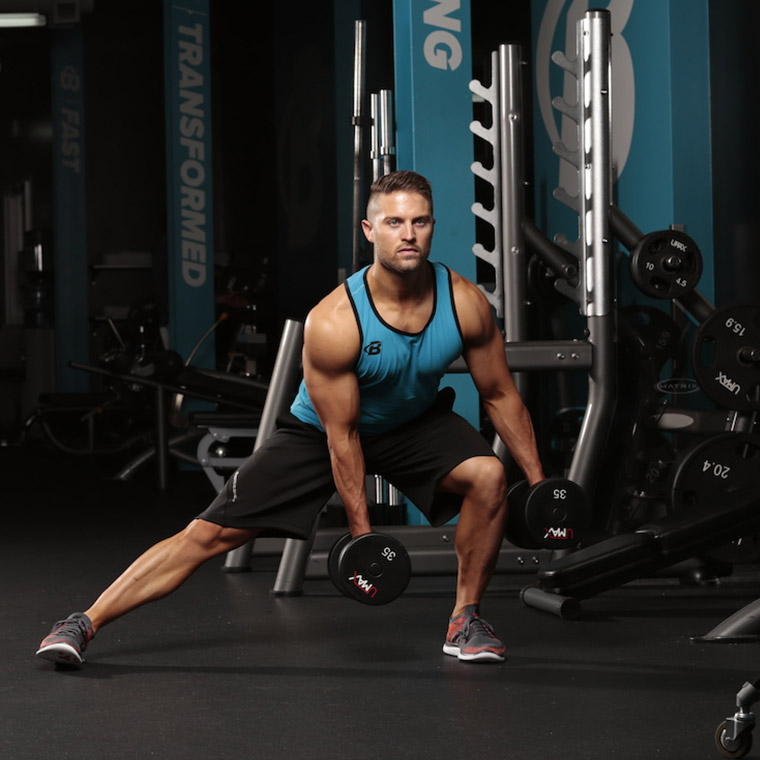
Side lunges with dumbbells offer several benefits that make them an excellent exercise to include in your workout routine. Here are a few of the top benefits:
- Strengthens Leg Muscles: Side lunges with dumbbells target the muscles in your legs, including your quadriceps, hamstrings, and glutes. This exercise can help to build strength in these muscles and improve your overall fitness level.
- Improves Balance and Coordination: Side lunges require you to balance your weight on one leg while lunging to the side with the other. This can improve your balance and coordination, making it easier to perform other exercises and physical activities.
- Burns Calories: Side lunges with dumbbells are a great calorie-burning exercise. They can help to increase your heart rate and burn calories, making them a great addition to a weight loss or fitness program.
- Easy to Modify: Side lunges with dumbbells are easy to modify to suit your fitness level. You can adjust the weight of the dumbbells or the depth of the lunge to make the exercise more or less challenging.
Tips for Performing Side Lunges With Dumbbells

If you're new to side lunges with dumbbells, here are a few tips to help you perform the exercise safely and effectively:
- Start Slow: Begin by doing a few repetitions of the exercise without weights to get the hang of the movement. Once you're comfortable, you can add weights to make the exercise more challenging.
- Focus on Form: Keep your back straight and your core engaged throughout the exercise. Make sure your knee doesn't extend beyond your toes when you lunge, as this can put unnecessary strain on your knee.
- Breathe Properly: Inhale as you step out to the side and lower your body into a lunge. Exhale as you push off with your foot and return to the starting position.
- Use Proper Weight: Choose a weight that is challenging but still allows you to perform the exercise with proper form. If you find yourself struggling to maintain proper form, reduce the weight or modify the exercise until you build up your strength.
Conclusion
Side lunges with dumbbells are a great exercise to incorporate into your workout routine if you want to tone and build your leg muscles. This exercise is easy to perform and offers several benefits, including increased strength, improved balance and coordination, calorie burning, and easy modification. By following the tips outlined in this article, you can perform side lunges with dumbbells safely and effectively, making them a valuable addition to your fitness routine.
Related video of Side Lunge With Dumbbells: A Great Exercise for Toning and Building Leg Muscles
When it comes to leg exercises, the hack squat is one of the most popular and effective movements out there. This exercise targets your quadriceps, glutes, and hamstrings, helping you build a strong lower body. However, like any other exercise, performing hack squats with the wrong form can lead to injuries and hinder your progress. In this article, we'll discuss the proper hack squat form to help you maximize your gains and minimize your risks.
Equipment Needed
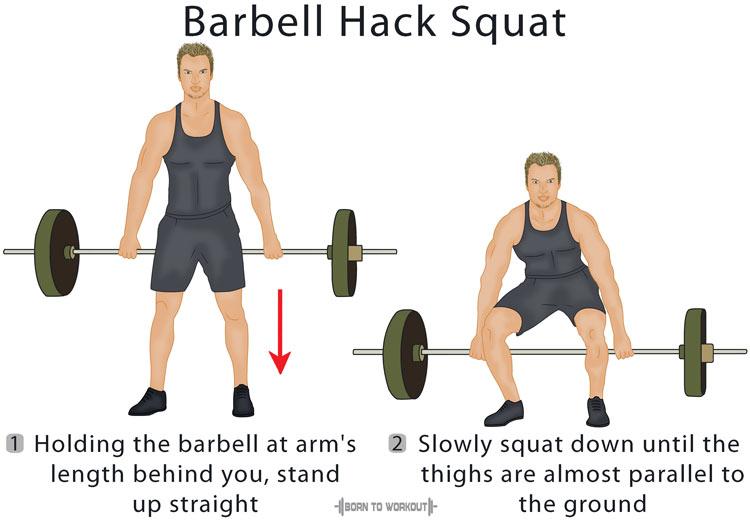
The hack squat can be performed with a barbell, dumbbells, or a hack squat machine. For beginners, we recommend using a hack squat machine as it offers better balance and stability. Make sure to adjust the machine to your height and weight before starting your workout. If you're using a barbell or dumbbells, make sure to load the weight evenly on both sides.
How to Perform the Hack Squat

1. Start by standing with your feet shoulder-width apart, your toes pointing forward, and your knees slightly bent.
2. Position yourself under the hack squat machine, making sure your shoulders are under the pads and your feet are flat on the platform.
3. Grasp the handles on either side of the machine and release the safety bars.
4. Inhale and squat down, keeping your back straight and your knees in line with your toes.
5. Lower yourself until your thighs are parallel to the ground, or until you reach a comfortable depth.
6. Exhale and push through your heels to return to the starting position.
7. Repeat for the desired number of reps.
Tips for Proper Form
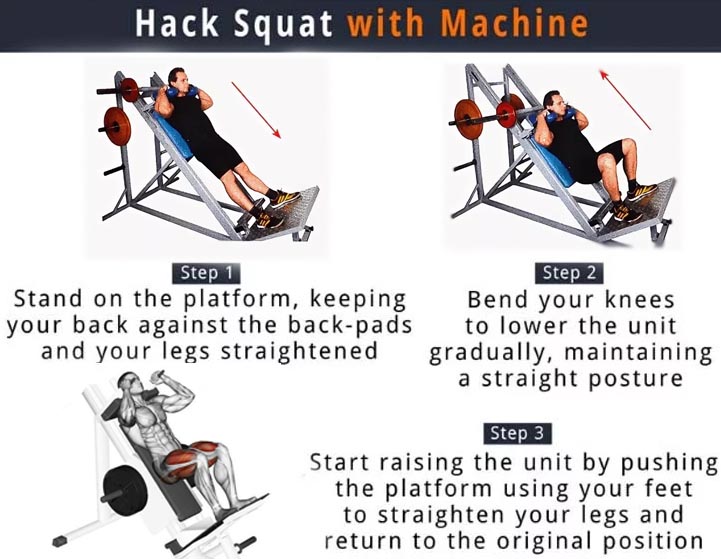
Here are some tips for maintaining proper hack squat form:
- Keep your back straight and your chest up throughout the movement.
- Maintain a neutral neck position, looking straight ahead or slightly up.
- Keep your knees in line with your toes, and don't let them cave in or flare out.
- Don't lock out your knees at the top of the movement.
- Don't bounce at the bottom of the movement, as this can strain your knees.
- Keep your movements slow and controlled, focusing on your muscle contractions.
Variations
Here are some variations of the hack squat you can try:
- Front Squat: Perform the hack squat with a barbell in front of your body instead of behind your body.
- Bulgarian Split Squat: Perform the hack squat with one leg elevated behind you, focusing on single-leg strength.
- Sumo Hack Squat: Perform the hack squat with a wider stance, targeting your inner thighs.
Conclusion
The hack squat is a great exercise for building lower body strength and muscle mass. By following the proper form and technique, you can reduce your risk of injury and improve your results. Remember to start with a light weight and gradually increase the load as you get stronger. With consistency and dedication, you can achieve your fitness goals and become a hack squat pro!
Related video of Proper Hack Squat Form

The incline Smith machine chest press is a popular exercise that targets the upper chest muscles. It is done using a Smith machine, which is a piece of weightlifting equipment that has a barbell fixed on steel rails.
How to do the Incline Smith Machine Chest Press

To perform the incline Smith machine chest press, follow these steps:
- Set up the Smith machine to an incline position that suits you.
- Load the bar with weights that you can lift comfortably.
- Lie back on the bench and position yourself under the bar.
- Grip the bar with your palms facing forward and your hands slightly wider than shoulder-width apart.
- Lift the bar off the rack and lower it to your chest while inhaling.
- Push the bar away from your chest while exhaling until your arms are fully extended but not locked.
- Pause for a second and then lower the bar back down to your chest while inhaling.
- Repeat the movement for the desired number of reps.
Benefits of Incline Smith Machine Chest Press

The incline Smith machine chest press provides several benefits:
- Targets the upper chest muscles, which are often neglected in regular chest exercises.
- Allows for a greater range of motion compared to other chest exercises.
- Reduces the risk of injury by providing better stability compared to free weights.
- Can be done by beginners as well as advanced lifters.
Variations of Incline Smith Machine Chest Press

There are several variations of the incline Smith machine chest press:
- Close-grip incline Smith machine chest press: This variation targets the triceps and inner chest muscles.
- Wide-grip incline Smith machine chest press: This variation targets the outer chest muscles.
- Single-arm incline Smith machine chest press: This variation provides more stability and targets each side of the chest individually.
Tips for Incline Smith Machine Chest Press

Here are some tips to keep in mind when doing the incline Smith machine chest press:
- Choose a weight that you can lift with good form and control.
- Keep your elbows close to your body throughout the movement.
- Breathe in while lowering the bar and breathe out while pushing it away from your chest.
- Don't lock your elbows at the top of the movement to avoid injury.
- Use a spotter if you are lifting heavy weights.
Conclusion
The incline Smith machine chest press is an effective exercise that targets the upper chest muscles. It provides several benefits and can be done by beginners as well as advanced lifters. By following the proper technique and using the right weight, you can safely and effectively perform this exercise to improve your chest strength and appearance.
Related video of Incline Smith Machine Chest Press
Prisoner squat is a type of bodyweight squat that is performed with the hands placed behind the head, rather than in front of the body. It is a popular exercise among bodybuilders, weightlifters, and fitness enthusiasts due to its effectiveness in building leg strength and muscle mass.
How to Perform a Prisoner Squat

To perform a prisoner squat, stand with your feet shoulder-width apart and place your hands behind your head, with your elbows pointing outwards. Keeping your back straight, squat down by bending your knees and pushing your hips back. Lower your body until your thighs are parallel to the ground, then push through your heels to return to the starting position.
It is important to maintain proper form throughout the exercise, with your knees tracking over your toes and your chest up. You can also add resistance by holding a weight or using a resistance band.
Benefits of Prisoner Squats

Prisoner squats offer a range of benefits for your lower body, including:
- Increased leg strength
- Improved muscle tone and definition
- Enhanced balance and stability
- Greater range of motion in the hips and knees
- Reduced risk of injury
Additionally, prisoner squats can be a good option for those who are unable to perform traditional squats due to a lack of equipment or mobility issues.
Variations of Prisoner Squats

There are several variations of prisoner squats that you can try to target different muscle groups and add variety to your workout:
- Sumo prisoner squats: performed with a wider stance to target the inner thighs
- Pistol prisoner squats: performed on one leg to challenge balance and stability
- Jump prisoner squats: performed with explosive jumps to increase power and speed
Remember to start with the basic prisoner squat before attempting any variations, and always listen to your body to avoid injury.
Conclusion
Prisoner squats are a simple yet effective exercise that can help you build leg strength, muscle mass, and overall fitness. By incorporating this exercise into your workout routine and trying different variations, you can challenge your body and achieve your fitness goals.
Related video of What Is A Prisoner Squat?

When it comes to building strong shoulders, there are a variety of exercises that you can do. One of the most effective exercises for targeting the rear deltoids is the bent over dumbbell lateral. This exercise is great for strengthening and toning your shoulders, and it can help you achieve that coveted "V-shaped" physique.
What are Bent Over Dumbbell Laterals?
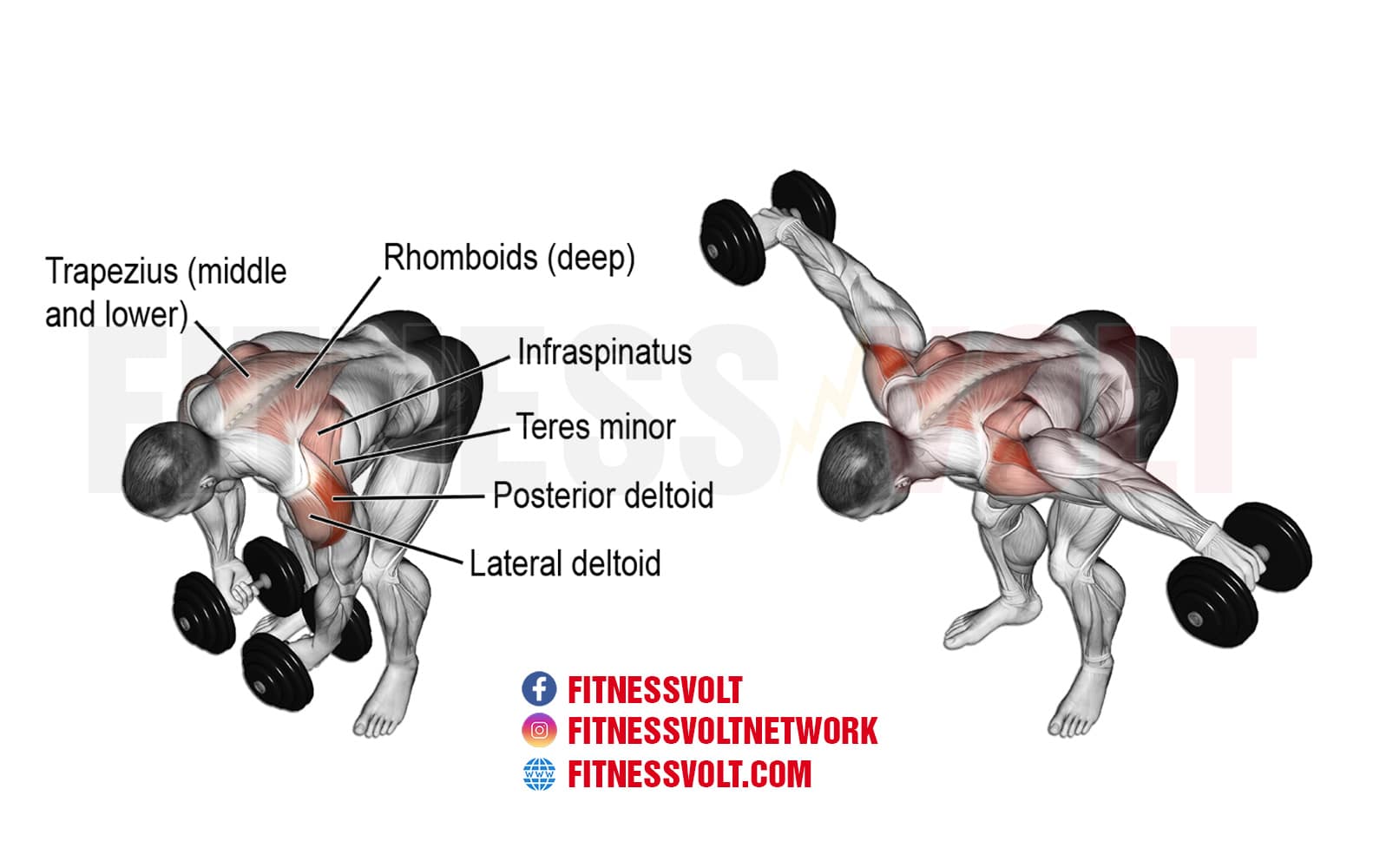
Bent over dumbbell laterals, also known as bent over lateral raises or bent over raises, are an isolation exercise that targets the posterior deltoids. To perform the exercise, you'll need a set of dumbbells and a bench or sturdy surface to lean on.
How to Perform Bent Over Dumbbell Laterals
To perform bent over dumbbell laterals:
- Stand with your feet shoulder-width apart and hold a dumbbell in each hand.
- Bend forward at the waist until your torso is nearly parallel to the ground.
- Keep your back flat and your head up.
- With your elbows slightly bent, lift the dumbbells out to your sides until your arms are parallel to the ground.
- Lower the dumbbells back down to the starting position.
- Repeat for the desired number of repetitions.
Tips for Performing Bent Over Dumbbell Laterals
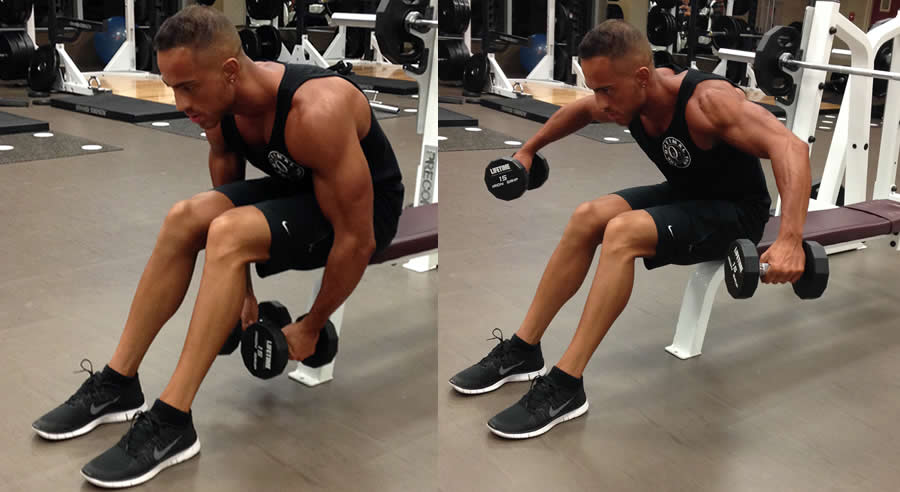
Here are some tips to help you get the most out of your bent over dumbbell lateral workout:
- Choose a weight that is challenging but allows you to maintain proper form.
- Keep your elbows slightly bent throughout the exercise.
- Focus on squeezing your shoulder blades together as you lift the dumbbells.
- Avoid swinging or jerking the dumbbells.
- Keep your core engaged and your back flat throughout the exercise.
- Breathe in as you lift the dumbbells, and exhale as you lower them.
Variations of Bent Over Dumbbell Laterals
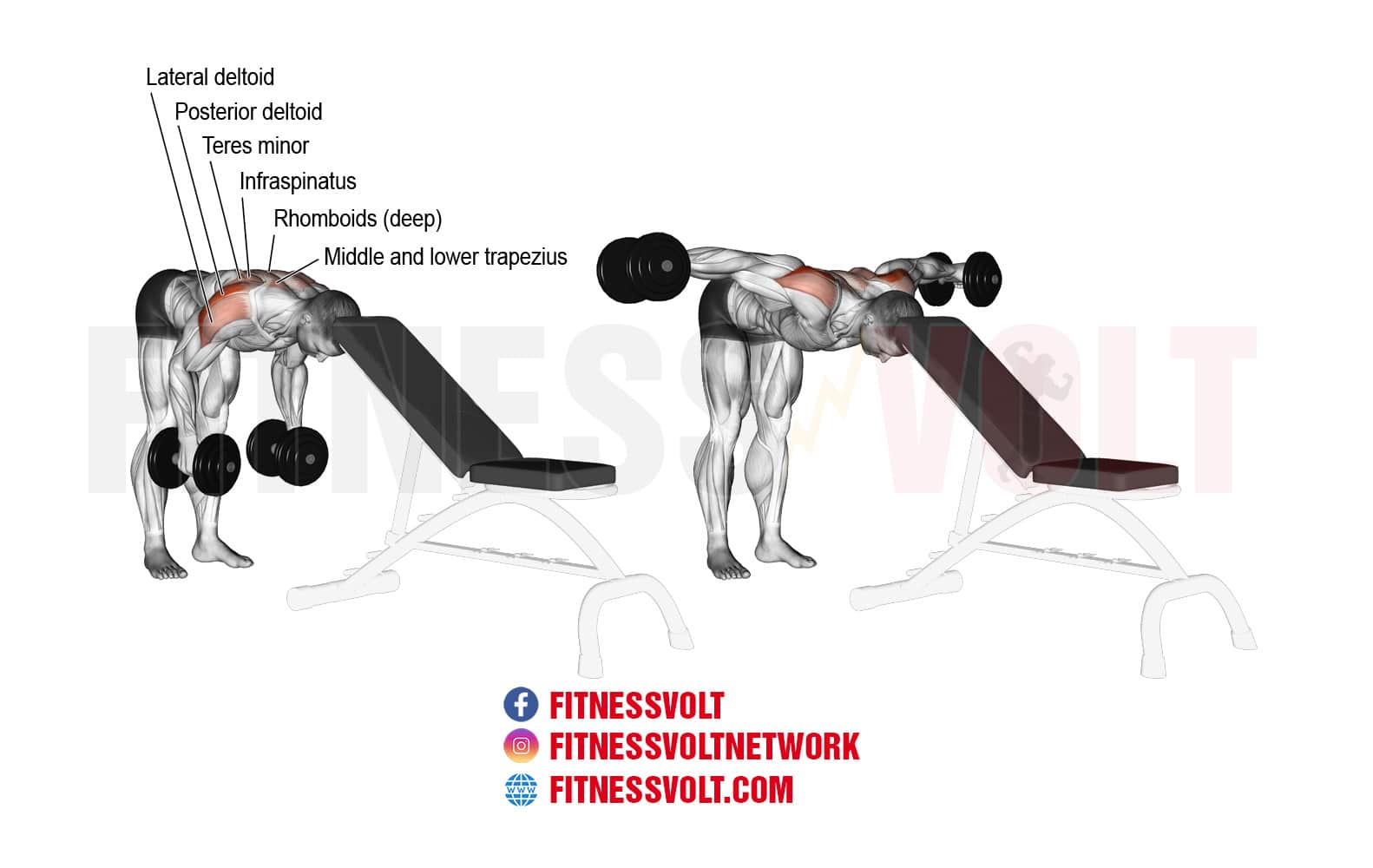
If you're looking to mix up your shoulder workout, here are some variations of bent over dumbbell laterals that you can try:
- Bent over cable laterals
- Bent over reverse flyes
- Bent over kettlebell raises
- Bent over resistance band raises
Incorporating Bent Over Dumbbell Laterals into Your Workout Routine

If you're looking to incorporate bent over dumbbell laterals into your workout routine, aim to perform 3-4 sets of 8-12 reps per workout. You can perform the exercise as part of your shoulder workout, or you can pair it with other exercises to create a full-body workout.
Benefits of Bent Over Dumbbell Laterals

Here are some of the benefits of incorporating bent over dumbbell laterals into your workout routine:
- Targets the rear deltoids, which are often neglected in shoulder workouts
- Can help improve shoulder strength and stability
- Can help improve posture and reduce the risk of shoulder injuries
- Can help you achieve a more "V-shaped" physique
Conclusion
Bent over dumbbell laterals are a great exercise for anyone looking to tone and strengthen their shoulders. By incorporating this exercise into your workout routine, you can target the rear deltoids and achieve a more balanced, aesthetically pleasing physique. Remember to focus on proper form, and don't be afraid to challenge yourself with heavier weights as you progress. Happy lifting!
Related video of Bent Over Dumbbell Laterals: A Guide to Building Strong Shoulders

Single leg squat with weight is an effective exercise for building strength in the lower body. It targets the glutes, quads, hamstrings, and calves. This exercise can be done with or without weights, but adding weights increases the intensity and difficulty of the exercise.
How to do Single Leg Squat With Weight

Step 1: Hold a weight in your right hand and stand with your feet hip-width apart.
Step 2: Extend your right leg forward and lift it off the ground.
Step 3: Slowly lower your body by bending your left knee and pushing your hips back.
Step 4: Keep your back straight and your chest up.
Step 5: Lower your body until your left thigh is parallel to the ground.
Step 6: Push through your left foot to raise your body back to the starting position.
Step 7: Complete the desired number of reps and then switch to the other leg.
Benefits of Single Leg Squat With Weight

1. Builds strength in the lower body - Single leg squat with weight targets the glutes, quads, hamstrings, and calves, which helps to build strength in the lower body.
2. Improves balance and stability - This exercise requires you to balance on one leg, which helps to improve your balance and stability.
3. Increases range of motion - Single leg squat with weight requires a greater range of motion than traditional squats, which helps to increase your overall flexibility.
4. Enhances athletic performance - This exercise targets the muscles that are used during athletic activities such as running, jumping, and kicking, which can improve your athletic performance.
Precautions and Tips

1. Start with bodyweight squats - If you're new to single leg squats, start with bodyweight squats to build up your strength and balance before adding weights.
2. Use proper form - Keep your back straight, chest up, and knees in line with your toes to avoid injury and get the most out of the exercise.
3. Start with a light weight - If you're adding weights, start with a light weight and gradually increase as you get stronger and more comfortable with the exercise.
4. Don't rush - Take your time with each rep and focus on maintaining proper form throughout the exercise.
Conclusion
Single leg squat with weight is an effective exercise for building strength in the lower body. Adding weights increases the intensity and difficulty of the exercise, but it's important to start with proper form and a light weight before progressing. Incorporating this exercise into your workout routine can help improve your balance, range of motion, and athletic performance.
Related video of Single Leg Squat With Weight

The incline dumbbell press is an effective exercise for building upper chest muscles, but not everyone has access to a bench. Fortunately, there are alternative ways to do this exercise without a bench. In this article, we will show you how to do the incline dumbbell press without a bench and the benefits of this exercise.
What is the Incline Dumbbell Press?
The incline dumbbell press is a strength-training exercise that targets the upper chest muscles, triceps, and shoulders. It is a variation of the flat bench press that involves lying on an incline bench and lifting dumbbells instead of a barbell. This exercise is popular among bodybuilders and fitness enthusiasts because it helps to create a well-rounded chest and improve upper body strength.
How to Do the Incline Dumbbell Press Without a Bench

Here are the steps to do the incline dumbbell press without a bench:
- Find a sturdy platform or elevated surface that is at a 30-45 degree angle.
- Stand facing the platform and hold a pair of dumbbells with an overhand grip.
- Place your right foot on the platform and step up, followed by your left foot.
- Stand with your feet shoulder-width apart and your knees slightly bent.
- Hold the dumbbells at shoulder height with your palms facing forward.
- Slowly lower the dumbbells to your chest while keeping your elbows close to your body.
- Pause for a moment and then push the dumbbells back up to the starting position.
- Repeat for the desired number of reps.
Benefits of the Incline Dumbbell Press
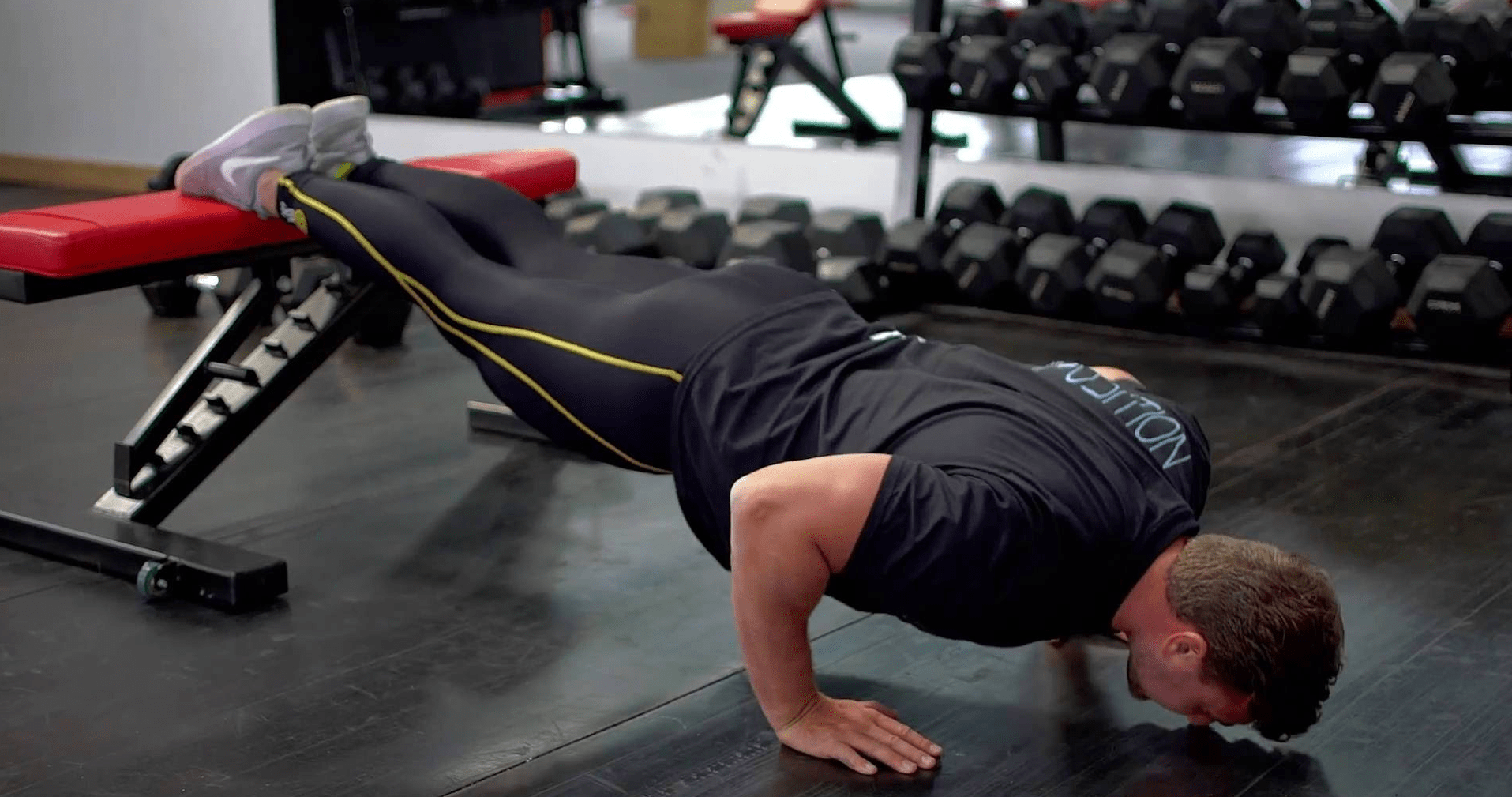
The incline dumbbell press has several benefits, including:
- Targets the upper chest muscles
- Improves upper body strength
- Increases muscle activation compared to flat bench press
- Allows for a greater range of motion
- Reduces strain on the shoulders
Tips for Doing the Incline Dumbbell Press Without a Bench
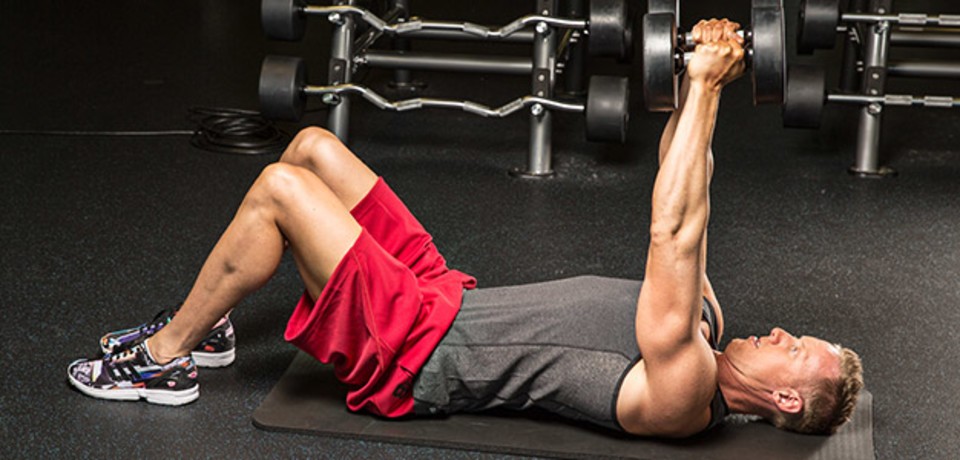
Here are some tips for doing the incline dumbbell press without a bench:
- Choose a sturdy platform or elevated surface that can support your weight.
- Start with lighter weights and focus on proper form before increasing the weight.
- Keep your elbows close to your body throughout the exercise.
- Breathe in as you lower the dumbbells and exhale as you push them back up.
- Don't lock your elbows at the top of the movement.
Conclusion
The incline dumbbell press is an effective exercise for building upper chest muscles and improving upper body strength. If you don't have access to a bench, you can still do this exercise by using a sturdy platform or elevated surface. Be sure to use proper form and start with lighter weights before increasing the weight. Incorporate this exercise into your chest workout routine for maximum results.
Related video of Incline Dumbbell Press Without Bench

Lateral step ups are one of the most effective lower body exercises. It not only helps in building strength but also helps in improving balance and coordination. This exercise targets several muscles in the lower body, making it one of the best compound exercises. In this article, we will discuss the muscles worked in lateral step ups.
Quadriceps

The quadriceps are the muscles located in the front of the thigh. These muscles are responsible for extending the knee joint. When performing lateral step ups, the quadriceps are the primary muscles worked. As you lift your body up, the quadriceps contract, helping you lift your body weight.
Glutes

The glutes, also known as the buttocks, are the muscles responsible for hip extension. When performing lateral step ups, the glutes are also worked. As you lift your body up, the glutes contract, helping you lift your body weight. This exercise is great for building strong and toned glutes.
Hamstrings

The hamstrings are the muscles located in the back of the thigh. These muscles are responsible for hip extension and knee flexion. When performing lateral step ups, the hamstrings are also worked. As you lift your body up, the hamstrings contract, helping you lift your body weight.
Calves

The calves are the muscles located at the back of the lower leg. These muscles are responsible for ankle plantar flexion. When performing lateral step ups, the calves are also worked. As you lift your body up, the calves contract, helping you lift your body weight.
Core

The core is the group of muscles located in the midsection of the body. These muscles are responsible for stabilizing the spine and pelvis. When performing lateral step ups, the core is also worked. As you lift your body up, the core muscles contract, helping you maintain proper form and balance.
Benefits of Lateral Step Ups

Lateral step ups are a great exercise for building lower body strength and improving balance and coordination. It targets several muscles in the lower body, making it one of the most effective compound exercises. Some of the benefits of lateral step ups include:
- Builds stronger and toned muscles
- Improves balance and coordination
- Increases lower body strength
- Helps in weight loss and fat burning
- Can be done with or without weights
- Requires minimal space and equipment
How to Perform Lateral Step Ups

To perform lateral step ups, follow the steps below:
- Stand beside a step or platform
- Place one foot on the step and lift your body up
- Step down and repeat with the other foot
- Alternate legs and repeat for desired reps
- You can also add weights to make the exercise more challenging
Conclusion
Lateral step ups are an effective exercise for building lower body strength and improving balance and coordination. It targets several muscles in the lower body, making it one of the best compound exercises. Incorporate lateral step ups in your workout routine to build stronger and toned muscles.
Related video of Lateral Step Ups Muscles Worked

One Arm Db Snatch is a popular exercise among athletes and fitness enthusiasts. It is a compound movement that involves lifting a weight from the ground to an overhead position with one hand. This exercise requires a great deal of strength, coordination, and balance, making it an excellent full-body workout.
How to Perform One Arm Db Snatch

To perform One Arm Db Snatch, follow these steps:
- Begin by standing with your feet shoulder-width apart and a dumbbell on the ground in front of you.
- Bend down and grasp the dumbbell with one hand, keeping your back straight and your core engaged.
- Drive your legs upward as you pull the dumbbell off the ground with your arm, extending your arm fully as you lift the weight to an overhead position.
- Lower the dumbbell back to the ground in a controlled manner, keeping your back straight and your core engaged.
- Repeat the movement for the desired number of repetitions.
It is important to maintain proper form throughout the exercise to avoid injury and maximize the benefits of the movement.
Benefits of One Arm Db Snatch

One Arm Db Snatch offers a variety of benefits, including:
- Improved strength and power
- Increased cardiovascular endurance
- Enhanced coordination and balance
- Engagement of multiple muscle groups, including the shoulders, back, legs, and core
- Calorie burning and weight loss
One Arm Db Snatch is also a functional movement that can help improve performance in sports and daily activities.
Variations of One Arm Db Snatch

There are several variations of One Arm Db Snatch that can be used to increase the difficulty or target specific muscle groups:
- Snatch from the hang – lift the weight from a starting position with the dumbbell at hip height
- Alternating snatch – alternate between lifting the weight with the right and left arms
- Single-leg snatch – perform the movement while balancing on one leg
- Snatch with a pause – pause for a few seconds at various points during the movement to increase time under tension
These variations can be used to challenge the body in new ways and prevent plateaus in progress.
Precautions and Considerations

When performing One Arm Db Snatch, it is important to keep the following precautions and considerations in mind:
- Start with a light weight and perfect your form before increasing the weight
- Engage your core and keep your back straight throughout the movement to avoid injury
- Use a weight that you can safely control throughout the entire range of motion
- Avoid the exercise if you have a shoulder, back, or wrist injury
- Consult with a fitness professional if you are new to the exercise or have any concerns about your ability to perform it safely
Conclusion
One Arm Db Snatch is a challenging and effective exercise that can help improve strength, power, endurance, coordination, and balance. By following proper form and taking necessary precautions, you can safely incorporate One Arm Db Snatch into your workout routine and enjoy its many benefits.
Related video of One Arm Db Snatch: How to Perform and Its Benefits

Hop on one leg, also known as single-leg jump, is a simple yet effective exercise that can improve your balance, coordination, agility, and lower body strength. It involves jumping on one leg while keeping the other leg lifted in the air, and then switching legs after each jump. This exercise can be done anywhere, anytime, and by anyone, regardless of their fitness level or age. In this article, we will explore the benefits, techniques, and tips of hop on one leg.
Benefits of Hop On One Leg

The benefits of hop on one leg are numerous and significant. Here are some of them:
- Improves balance and coordination: Hop on one leg requires you to maintain your balance and coordination while jumping and landing on one leg, which can enhance your proprioception (awareness of your body's position and movement in space) and prevent falls and injuries.
- Increases lower body strength: Hop on one leg targets your glutes, quadriceps, hamstrings, calves, and ankles, which can make them stronger and more toned. This can improve your athletic performance, posture, and overall health.
- Enhances cardiovascular fitness: Hop on one leg can get your heart rate up and challenge your cardiovascular system, which can improve your endurance, stamina, and metabolism.
- Boosts brain function: Hop on one leg can stimulate your brain's neural pathways and improve your cognitive function, memory, and focus. This can also reduce your risk of neurological disorders and dementia.
Techniques of Hop On One Leg
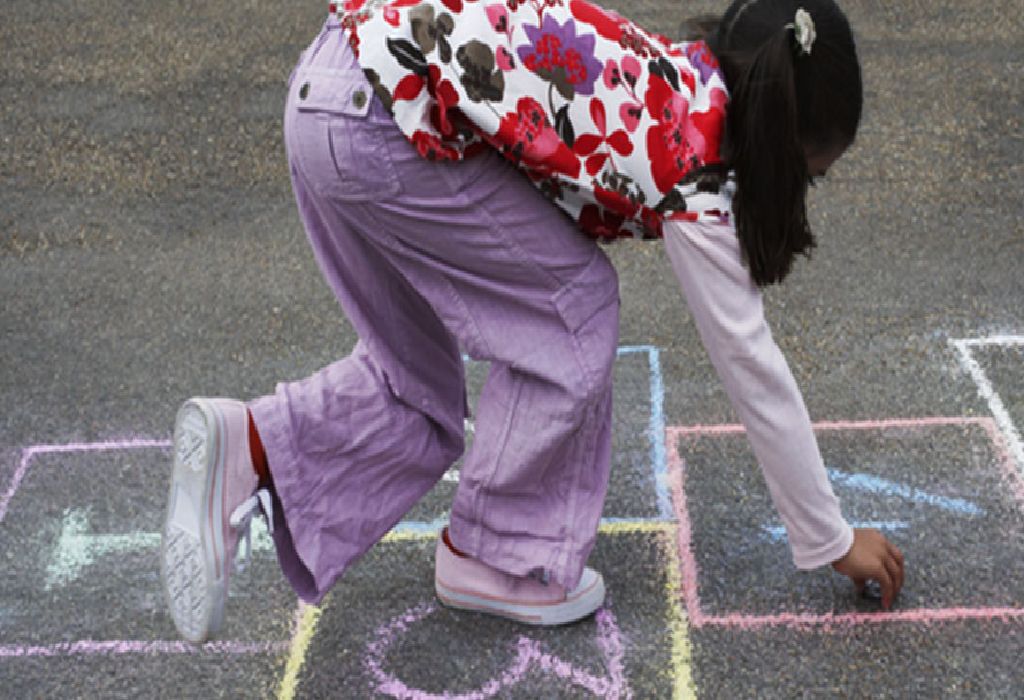
The techniques of hop on one leg are simple but require proper form and alignment to avoid injury and maximize benefits. Here are the steps:
- Stand on one leg with your knee slightly bent and your foot firmly planted on the ground.
- Lift the other leg off the ground and hold it in front of you or behind you, depending on your preference and balance.
- Jump on the standing leg and land softly on the same leg.
- Switch legs in mid-air and lift the other leg while hopping.
- Repeat the cycle for 10-20 hops or until you feel fatigued.
Tips for Hop On One Leg

The tips for hop on one leg are essential to ensure safety, effectiveness, and enjoyment. Here are some of them:
- Start with a warm-up: Before hopping on one leg, warm up your body with some dynamic stretching, jogging, or jumping jacks. This can prevent muscle strain and injury.
- Use a support: If you are new to hop on one leg or have balance issues, use a wall, a chair, or a friend to support yourself while hopping.
- Focus on your form: Keep your core engaged, your back straight, and your eyes forward while hopping. Avoid leaning or tilting your body to one side.
- Breathe naturally: Inhale and exhale through your nose or mouth while hopping. Do not hold your breath or pant excessively.
- Progress gradually: Start with a few hops and increase the duration and intensity gradually over time. Do not push yourself beyond your limits or feel discouraged by setbacks.
Conclusion
Hop on one leg is a fun, challenging, and beneficial exercise that can improve your balance, coordination, strength, and brain function. By following the techniques and tips outlined in this article, you can hop safely and effectively on one leg and reap the rewards of this simple yet powerful exercise. So, hop to it and enjoy the ride!
Related video of Hop On One Leg: Benefits, Techniques, and Tips

If you're looking to build a strong and muscular posterior chain, the dumbbell Romanian deadlift (RDL) is an excellent exercise to add to your workout routine. The RDL targets your hamstrings, glutes, lower back, and core, making it an effective exercise for building overall strength and stability.
Equipment needed

To perform the dumbbell RDL, you'll need a pair of dumbbells. You can also use a barbell, but dumbbells offer more flexibility and allow for a greater range of motion. Make sure to choose a weight that challenges you but still allows you to maintain proper form.
Proper form

Stand with your feet shoulder-width apart and hold a dumbbell in each hand with your palms facing your thighs. Keeping your back flat, hinge at the hips and lower the dumbbells towards the ground. Your knees should be slightly bent, and your weight should be on your heels. Lower the dumbbells until you feel a stretch in your hamstrings, then drive your hips forward to return to the starting position.
Variations

Once you've mastered the basic dumbbell RDL, you can try variations to target different muscle groups. For example, you can perform a single-leg RDL to increase stability and balance, or you can use a deficit to increase range of motion.
Tips for success

To get the most out of your dumbbell RDL, follow these tips:
- Keep your back flat and your core engaged throughout the exercise.
- Focus on hinging at the hips rather than bending your knees.
- Keep your weight on your heels to target your hamstrings and glutes.
- Use a weight that challenges you but still allows you to maintain proper form.
- Try different variations to target different muscle groups and prevent boredom.
Conclusion
The dumbbell RDL is a versatile and effective exercise for building strength and stability in your posterior chain. By following proper form and incorporating variations, you can target different muscle groups and prevent boredom. Include the dumbbell RDL in your workout routine to see results in your hamstrings, glutes, lower back, and core.